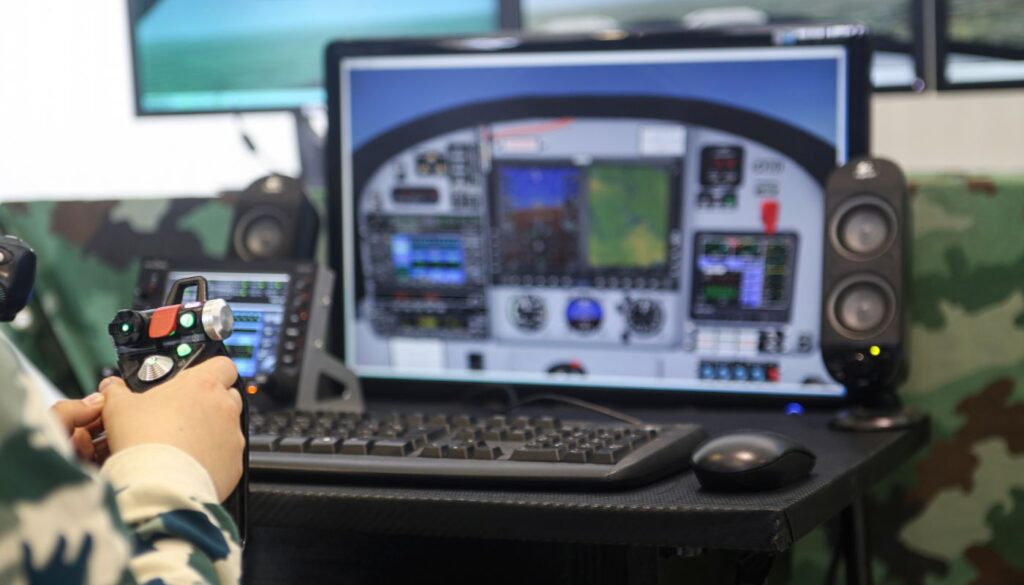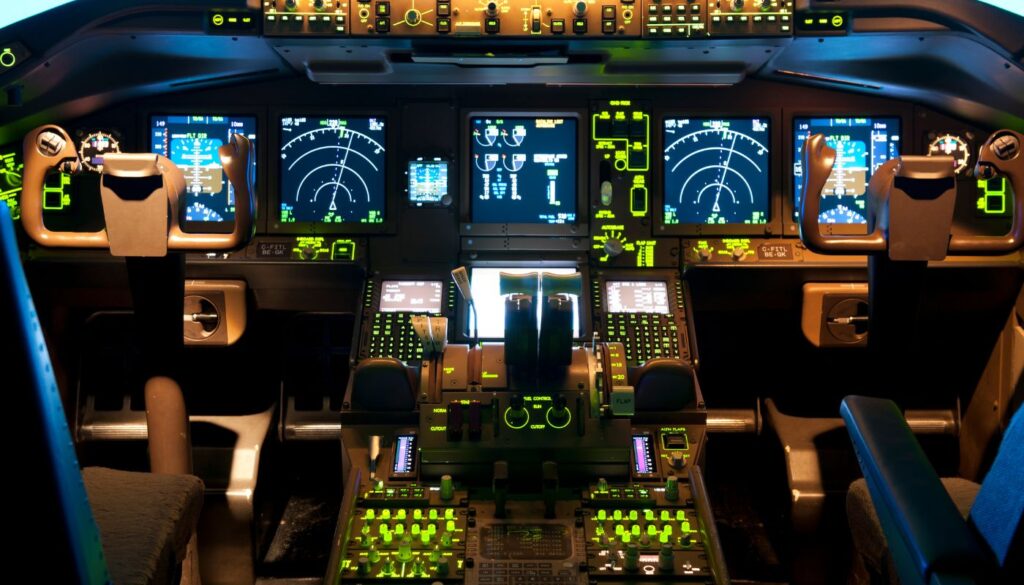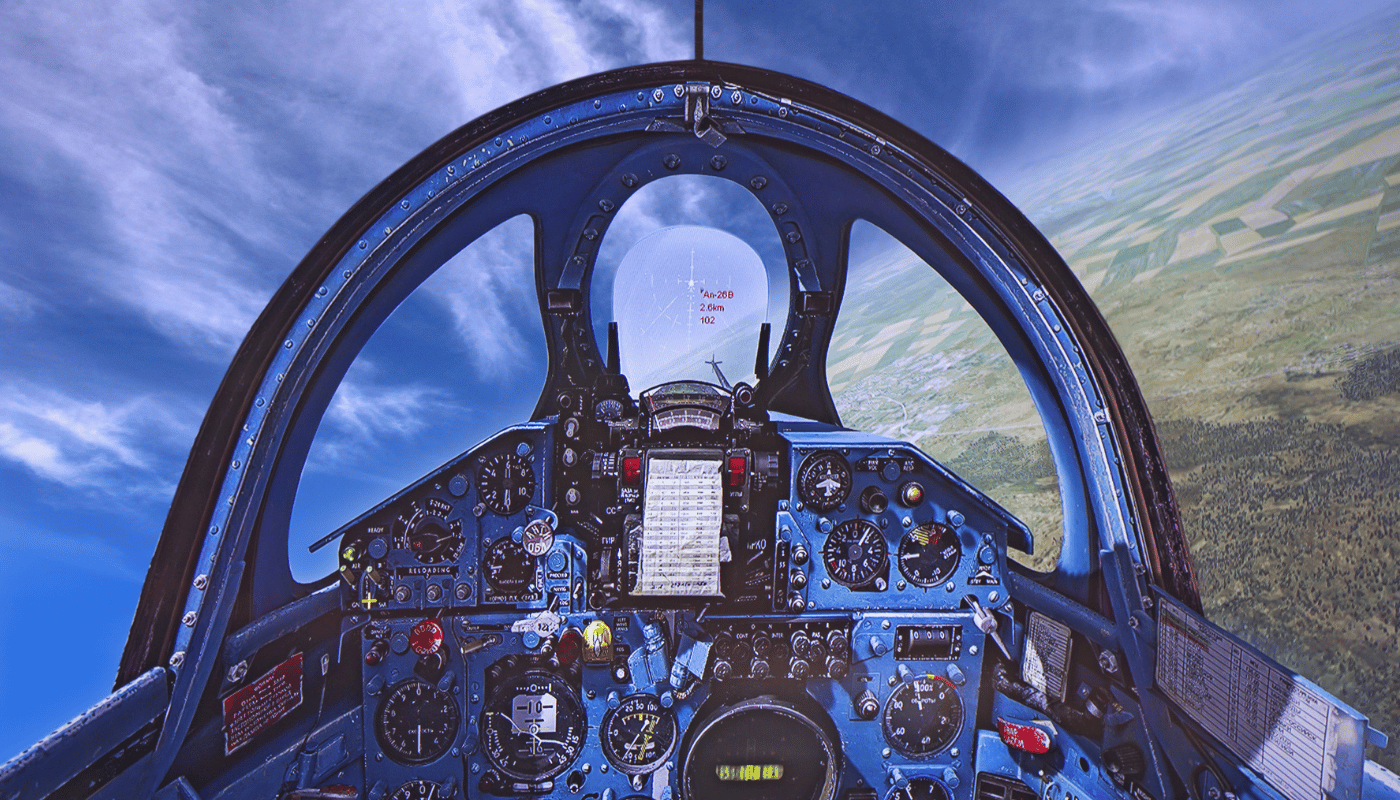In the quest for the ultimate virtual flying experience, choosing the best flight simulator becomes paramount. With numerous options available, each promising a unique blend of realism, graphics, and aircraft variety, how does one decide which simulator takes the crown? This article explores the top contenders in the realm of flight simulation, examining their strengths and weaknesses. Whether you’re a seasoned pilot or a dreamy-eyed aviation enthusiast, join us as we navigate through the skies of simulation to uncover the best flight simulator on the market.
Exploring the Best Flight Simulator Options
Finding the best flight simulator can be a daunting task, given the variety of options available in the market. Each simulator offers a unique blend of realism, aircraft variety, and flying environments. Whether you are a budding pilot looking to gain some experience from the comfort of your home, a flight enthusiast seeking an immersive experience, or a professional looking for a training tool, understanding the key features of top simulators is crucial.
One of the most critical aspects to consider is the level of realism. This doesn’t only pertain to the graphics but also to the flight dynamics and how closely the simulator mimics real-life physics. Another important factor is the range of aircraft available; the best simulators offer a wide selection, from single-engine planes to large commercial jets, each with accurately modeled cockpits and systems. Additionally, the size and variety of the flying environment, including airports and weather conditions, play a significant role in providing a comprehensive flying experience.
Moreover, community support and the availability of additional content such as mods, add-ons, and downloadable content (DLC) can significantly enhance the longevity and enjoyment of a flight simulator. Now, let’s delve into a comparative analysis of some of the top flight simulators to help you make an informed decision.
| Flight Simulator | Realism | Aircraft Variety | Environment Size | Community Support |
|---|---|---|---|---|
| Microsoft Flight Simulator 2020 | High | Wide Range | Vast | Extensive |
| X-Plane 11 | Very High | Wide Range | Large | Strong |
| Prepar3D | High | Moderate | Large | Moderate |
| DCS World | Very High | Limited to Military | Large | Strong |
| FlightGear | Medium | Wide Range | Large | Open Source Community |
Enhancing Your Flight Simulator Experience
To make the most out of your flight simulation experience, consider investing in additional hardware such as yokes, rudder pedals, and throttle quadrants. These peripherals not only increase the level of immersion but also improve your piloting skills by providing more accurate control inputs compared to a standard joystick or gamepad. Furthermore, exploring the vast libraries of third-party add-ons can introduce you to new aircraft, scenery packs, and utilities that significantly expand the capabilities of your chosen simulator.
Ultimately, the best flight simulator for you will depend on your specific needs, interests, and level of commitment to the hobby or profession. By carefully considering the factors discussed and making use of the comparative analysis provided, you are well on your way to selecting a flight simulator that offers the perfect balance of realism, variety, and community support. Welcome to the skies!
Exploring the Sky: Choosing the Ultimate Flight Simulator

Finding the best flight simulator can transform your virtual aviation experience from mundane to extraordinary. Whether you’re a budding pilot seeking to understand the nuances of flight mechanics or a gaming aficionado desiring the thrill of navigating the vast skies, the right flight simulator can significantly impact your journey. The market boasts a variety of options, ranging from highly realistic simulators used by professional pilots for training to more accessible versions that cater to enthusiasts and gamers. Each simulator offers a unique blend of features, including aircraft variety, scenery detail, and flight dynamics, making the selection process crucial.
When considering a flight simulator, it’s essential to weigh the realism of the flight mechanics against the quality of the graphics. A simulator with advanced aerodynamic modeling provides a more authentic flying experience, beneficial for those serious about learning or enhancing their piloting skills. Meanwhile, high-definition scenery and detailed aircraft models can significantly enhance immersion, making every flight session an adventure. Compatibility with third-party add-ons and hardware, such as joysticks and rudder pedals, also plays a vital role in tailoring the simulation experience to individual preferences.
Key Features to Consider in Flight Simulators
Understanding the core features that define the best flight simulators can help narrow down the choices. These features not only contribute to the realism and enjoyment of the simulator but also ensure that users can customize their experience to match their aviation interests.
| Feature | Importance | Examples |
|---|---|---|
| Aircraft Variety | High | X-Plane, Microsoft Flight Simulator |
| Scenery Detail | High | Microsoft Flight Simulator, Prepar3D |
| Flight Dynamics | Critical | X-Plane, DCS World |
| Hardware Compatibility | Important | Most Major Simulators |
| Third-party Add-ons | Variable | X-Plane, Microsoft Flight Simulator |
By carefully considering these factors, enthusiasts and prospective pilots can find a flight simulator that not only meets their current needs but also supports their growth and passion for aviation. Whether for professional training or personal enjoyment, the best flight simulator is one that aligns with your goals, offering both challenge and excitement in the virtual skies.
Top Flight Simulator Features
Choosing the right flight simulator can be a thrilling yet daunting task. The market offers a variety of options, each boasting its unique set of features. However, certain crucial aspects set the best flight simulators apart from the rest. First and foremost, realism is paramount. The physics of the flight, the accuracy of aircraft models, and the fidelity of the environment play a significant role in immersing the user into the virtual skies. Another vital feature is the diversity of aircraft. A top-flight simulator offers a wide range of aircraft, from single-engine props to massive commercial jets, each meticulously detailed and true to its real-world counterpart.
The quality of the scenery is another aspect that cannot be overlooked. High-definition landscapes, realistic weather patterns, and accurate representations of airports around the world enhance the overall experience. Moreover, the availability of multiplayer options and flight training modules for both beginners and advanced pilots adds a significant value to the simulator. It’s not just about the flight; it’s about the learning and community experience as well. Lastly, customization and modding capabilities allow users to tailor their experience, making the simulator not just a game but a personal journey through the skies.
Further Insights into Flight Simulator Features
Delving deeper into the features that distinguish the best flight simulators, it’s essential to recognize the importance of user interface and support. A user-friendly interface that caters to both novice aviators and seasoned pilots ensures a broad appeal. Additionally, robust support and regular updates from the developers reflect the simulator’s longevity and commitment to quality. These elements, combined with the core features mentioned earlier, create a comprehensive and immersive flight simulation experience that stands the test of time.
Detailed Analysis of Essential Flight Simulator Characteristics
Exploring the intricate details of what makes a flight simulator truly stand out, we see that the depth of the flight dynamics engine and the accuracy of the aerodynamic models are critical. These technical elements are what make the simulation feel real. It’s the difference between feeling like you’re playing a game and feeling like you’re actually piloting an aircraft. This level of detail extends to the simulation of system failures, weather impacts, and air traffic control interactions, providing an educative aspect that prepares pilots for real-world challenges.
| Feature | Importance | Example Simulators |
|---|---|---|
| Realism | Provides immersive experience | X-Plane, Microsoft Flight Simulator |
| Diversity of Aircraft | Enhances learning and enjoyment | DCS World, Prepar3D |
| Quality of Scenery | Increases realism and engagement | Microsoft Flight Simulator, X-Plane |
| Multiplayer Options | Facilitates community and learning | DCS World, FlightGear |
| Customization | Allows personalization and modding | X-Plane, Microsoft Flight Simulator |
Comparing Popular Flight Sims

Choosing the right flight simulator can be as daunting as piloting a plane through turbulent skies for the first time. The market offers a vast array of options, each with its own set of features, realism levels, and aircraft variety. In this comprehensive guide, we delve into the nuances of the most popular flight simulators, helping you make an informed decision based on your preferences, whether you’re a casual gamer or an aspiring pilot.
At the forefront of realism and complexity is Microsoft Flight Simulator. Launched in 2020, it has set a new standard for visual fidelity and real-world simulation. The game utilizes satellite imagery and artificial intelligence to generate photorealistic landscapes, offering an unparalleled flying experience that covers the entire globe. However, its high system requirements can be a barrier for those without a powerful PC setup. Next, X-Plane 11 prides itself on its advanced flight dynamics model, which is arguably the most realistic on the market. It’s a top choice for real pilots and aviation enthusiasts who crave the intricacies of flight physics. X-Plane 11 also boasts a robust community that contributes a plethora of addons and mods, enhancing the simulation experience further.
For those who lean towards combat simulation, DCS World stands out with its meticulous attention to detail in aircraft systems and combat dynamics. It offers a free-to-play model, allowing users to purchase additional aircraft and terrain as desired. The simulator’s learning curve is steep, but it’s incredibly rewarding for those who invest the time to master it. On the other hand, IL-2 Sturmovik series focuses on World War II combat, providing a balance between accessibility and realism. It’s acclaimed for its immersive single-player campaigns and dynamic multiplayer battles.
| Simulator Name | Focus | System Requirements | Notable Features |
|---|---|---|---|
| Microsoft Flight Simulator | General Aviation | High | Global satellite imagery, Real weather |
| X-Plane 11 | General/Professional Aviation | Medium | Advanced flight physics, Large addon library |
| DCS World | Military Combat | Medium to High | Highly detailed aircraft, Scalable learning curve |
| IL-2 Sturmovik | WWII Combat | Medium | Immersive campaigns, Dynamic weather |
| FlightGear | General Aviation | Low to Medium | Open-source, Extensive aircraft selection |
In conclusion, the best flight simulator for you depends largely on your interests and system capabilities. Microsoft Flight Simulator is unmatched in terms of visual realism and global scope, making it ideal for those fascinated by exploration and real-world flying. X-Plane 11 offers the most advanced flight physics, appealing to aviation professionals and enthusiasts. DCS World and IL-2 Sturmovik cater to fans of military aviation, with a focus on combat simulation. Lastly, FlightGear is a great option for those seeking a free, open-source alternative. Each simulator has its own strengths and community, ensuring that there’s a perfect fit for everyone in the world of virtual aviation.
Realism in Modern Simulators
The quest for realism in flight simulators has been a continuous journey, evolving significantly with advances in technology. Today’s simulators offer an immersive experience that is closer than ever to piloting an actual aircraft. These advancements encompass not only the visual and auditory experience but also the physical interactions with the aircraft’s controls and the environment.
At the heart of this realism is the sophisticated physics engine that accurately models the aerodynamics of various aircraft. From the effect of weather conditions on the plane’s handling to the response of the aircraft to pilot inputs, modern simulators strive to replicate the nuances of flying as closely as possible. Furthermore, the incorporation of virtual reality (VR) technology has elevated the experience, allowing pilots and enthusiasts to feel as though they are truly in the cockpit, looking out over a vast and detailed landscape.
Another key aspect is the fidelity of the aircraft models themselves. Developers spend countless hours ensuring that every switch, dial, and gauge functions just as it does in the real aircraft. This attention to detail extends to the flight characteristics of the planes, which are often validated by actual pilots for accuracy. The result is a training tool and recreational product that can offer valuable experience and enjoyment to users, ranging from aspiring pilots to seasoned veterans.
| Feature | Importance | Example Simulators |
|---|---|---|
| Physics Engine | High | X-Plane, Microsoft Flight Simulator |
| VR Support | Medium | DCS World, Aerofly FS 2 |
| Aircraft Fidelity | High | Prepar3D, Microsoft Flight Simulator |
| Weather Modeling | Medium | X-Plane, Microsoft Flight Simulator |
| Global Scenery | Low | Microsoft Flight Simulator, X-Plane |
Flight Simulator Hardware Needs
Embarking on the journey of flight simulation is an exhilarating experience that bridges the gap between the skies and our homes. However, transforming this virtual dream into a tangible reality requires more than just software; it demands a robust hardware setup. At the core of this setup is a powerful computer, one equipped with a high-performance processor and a graphics card that can render the intricate details of the flight environment with precision. The goal is to achieve a seamless and immersive experience that closely mirrors the complexities of real-world flying.
Moreover, the choice of peripherals significantly elevates the simulation experience. High-quality flight yokes, rudder pedals, and throttle quadrants are essential for replicating the tactile feedback and control nuances of actual aircraft. For those seeking an even deeper level of immersion, investing in multiple monitors or a virtual reality headset can transform a mundane desk space into a dynamic cockpit environment. The inclusion of these peripherals not only enhances the realism of the simulation but also aids in the development of muscle memory and flight proficiency.
Optimizing Your Flight Simulator Setup
To truly capitalize on the hardware assembled, one must consider the integration and optimization of each component. This involves not only the physical arrangement of peripherals for ergonomic comfort but also the technical configuration to ensure compatibility and performance efficiency. Software settings play a crucial role in this optimization process, as they must be meticulously adjusted to balance between visual fidelity and system performance.
- Investigate the minimum and recommended system requirements for your chosen flight simulator software.
- Select a processor and graphics card that exceed these recommendations to future-proof your setup.
- Choose flight simulation peripherals that offer both durability and a high degree of realism.
- Consider the ergonomics of your setup to prevent strain during long flight sessions.
- Regularly update your software and drivers to maintain compatibility and performance.
Advanced Configuration Tips for Flight Simulation Enthusiasts
For those looking to push the boundaries of their flight simulation experience, delving into advanced hardware configurations can offer substantial rewards. This includes overclocking your CPU and GPU for enhanced performance, utilizing SSDs for faster load times, and configuring multiple monitors or projectors for an expansive field of view. While these endeavors may require additional research and caution, the resultant enhancement in simulation realism and responsiveness is often well worth the effort.
Community and Multiplayer Aspects
The community and multiplayer aspects of flight simulators are crucial in providing a realistic and immersive experience. A vibrant, active community not only contributes to the continuous development and improvement of the simulator but also enhances the multiplayer experience by providing opportunities for collaboration, competition, and learning. Among the best flight simulators, those with a strong focus on community engagement and multiplayer capabilities stand out.
Multiplayer aspects allow pilots to interact with each other in a shared virtual airspace, participating in everything from casual flying to organized events such as airshows, races, or cooperative missions. This interaction significantly enriches the flying experience, offering challenges and learning opportunities that are not present when flying solo. The best simulators offer seamless multiplayer integration, allowing for easy connection with others and stable performance during joint flights. Additionally, community-driven content, such as custom aircraft and scenery mods, plays a vital role in keeping the simulation environment fresh and engaging.
The following are key features that enhance the community and multiplayer experience in flight simulators:
- Dedicated servers for various types of flying activities.
- Tools for community communication, such as forums and voice chat.
- Support for user-generated content, including aircraft and scenery.
- Regular community events and competitions.
- Comprehensive tutorials and learning resources created by community members.
Enhancing Your Flight Sim Experience: Community and Multiplayer Insights
In conclusion, the community and multiplayer aspects of flight simulators are integral to a complete and enjoyable simulation experience. They offer pilots the chance to engage with others, share experiences, and continually learn and improve. The simulators that prioritize these aspects by providing robust multiplayer features and fostering active communities are often those that offer the most rewarding and immersive experiences. As the world of flight simulation continues to evolve, the importance of these community and multiplayer elements will undoubtedly continue to grow.

